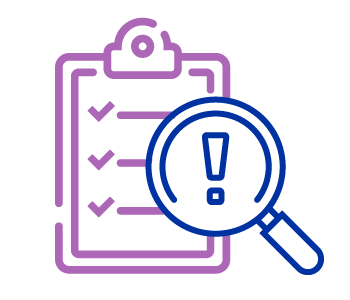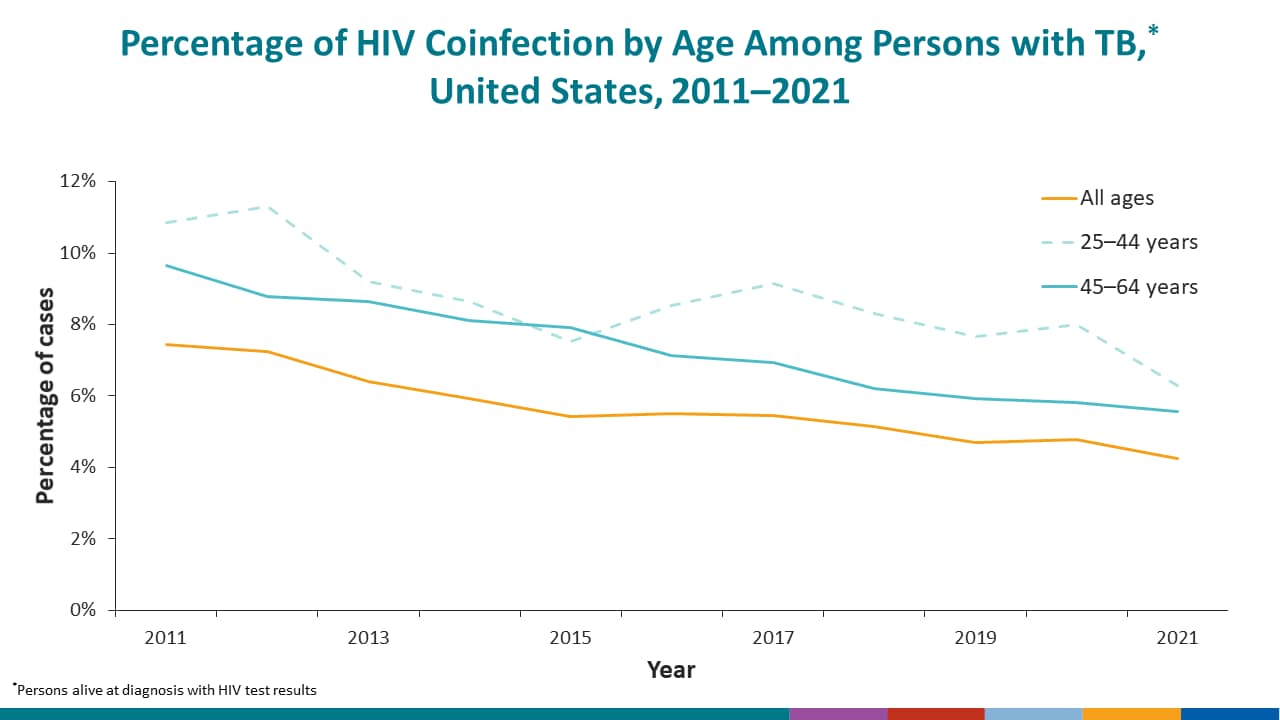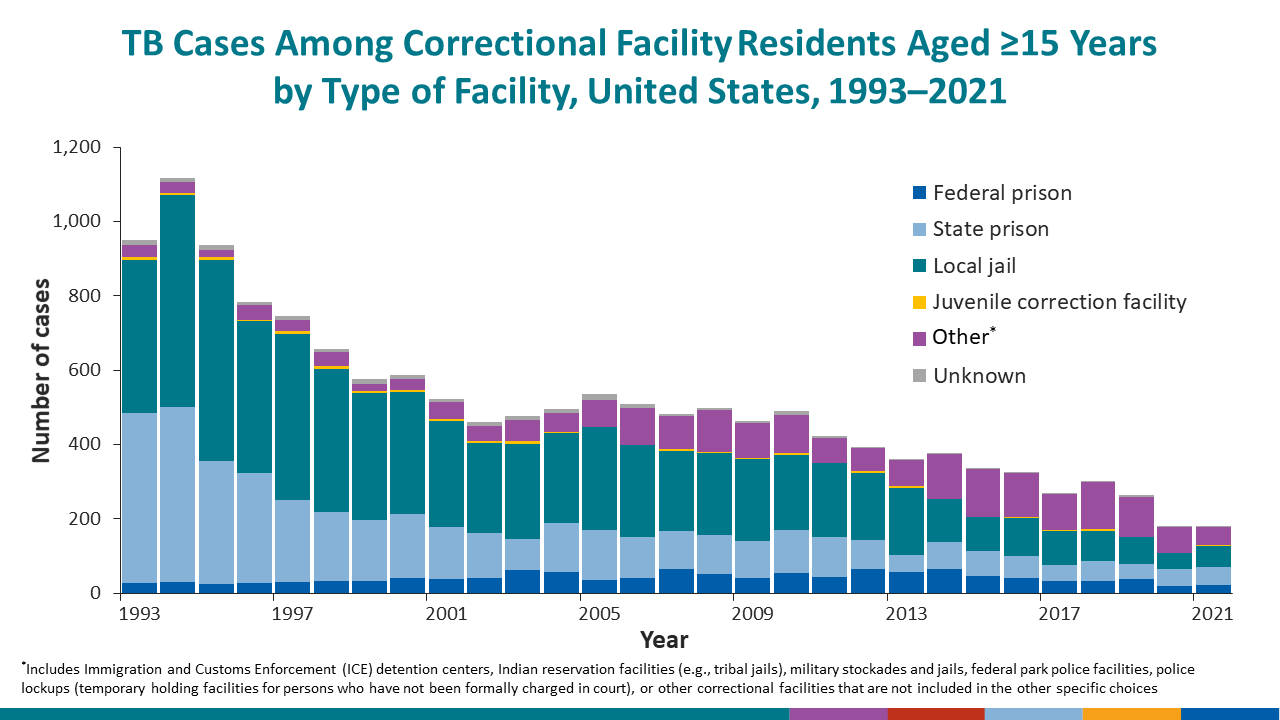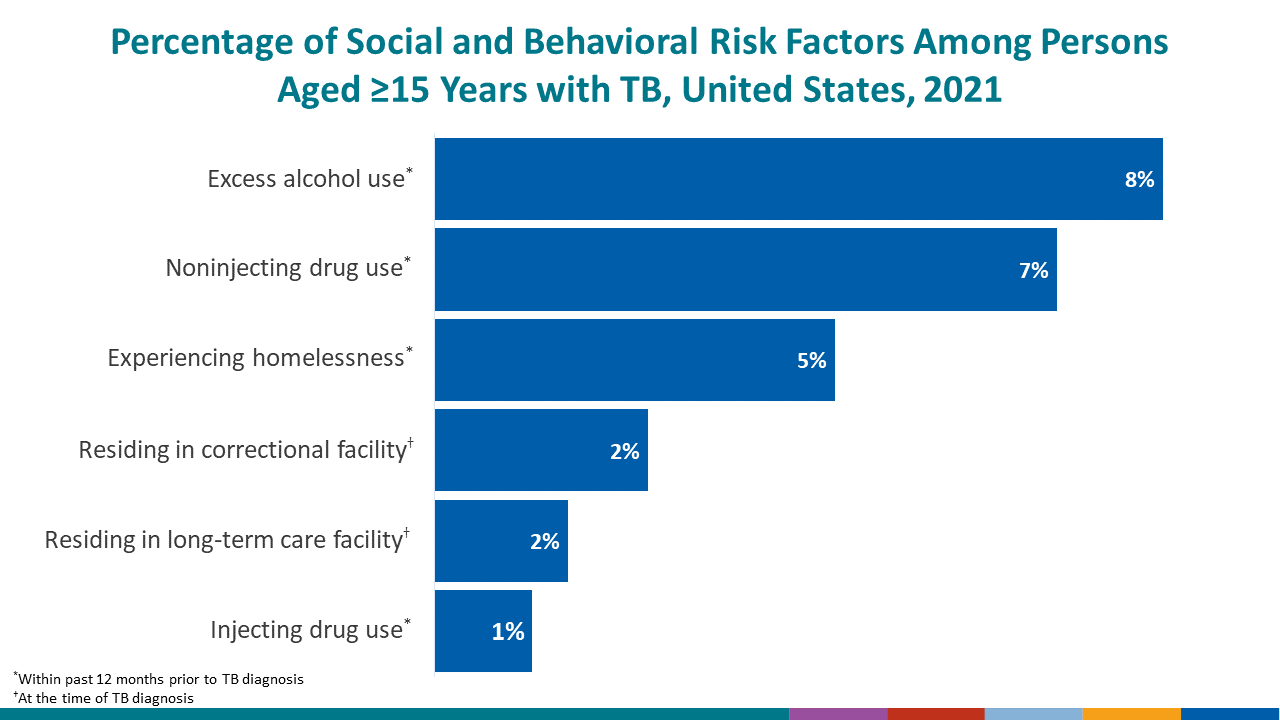Reported Tuberculosis in the United States, 2021
Risk Factors
Some people are at greater risk of TB disease compared with others. CDC analyzes factors that increase a person’s risk of becoming infected with or developing TB disease.
- Medical conditions that weaken the immune system include:
- Social and occupational factors include:
- Employment or residence in a correctional facility or long-term care facility
- Experiencing homelessness
- Substance use
Medical conditions or therapies that weaken the immune system can increase a person’s risk of developing TB disease if they are infected.
Diabetes mellitus
TB disease is a serious health threat, especially for persons with diabetes.
In 2021, diabetes mellitus (23.9%) was the most commonly reported medical risk factor among persons with TB disease (TB Risk Factors by Origin and Race/Ethnicity: 2021 and TB Risk Factors: Reporting Areas, 2021).
Among persons with TB disease in 2021, diabetes mellitus is more common among non-U.S.–born persons (26.7%) compared with U.S.-born persons (16.8%) (TB Risk Factors by Origin and Race/Ethnicity: 2021).
Human immunodeficiency virus (HIV)
Coinfection with human immunodeficiency virus (HIV) is a major risk factor for progression of latent TB infection to TB disease.
Among persons with TB disease in 2021 who were alive at diagnosis, HIV status was known for 90.5%. Of those persons with TB disease and known HIV status, 4.2% were also living with HIV.
Among persons with TB disease and known HIV status, HIV coinfection occurred for 6.3% of persons aged 25–44 years and 5.6% of persons aged 45–64 years (TB Among Persons with HIV Coinfection: 2011–2021).
People living in congregate settings, including homeless shelters, correctional facilities, detention centers, and long-term care facilities, are at increased risk of becoming infected with TB bacteria because shared airspaces can facilitate TB exposure and transmission. TB bacteria are spread through the air from one person to another. Many congregate settings have shared airspace, which can increase a person’s exposure to TB bacteria and enable the spread of TB bacteria.
Residents of correctional facilities
In 2021, 2.4% of persons 15 years of age or older diagnosed with TB disease were current residents of correctional facilities at the time of diagnosis (TB in Correctional Facilities: Reporting Areas, 2021).
Among those*,
- 12.3% were current residents of federal prisons
- 27.9% were current residents of state prisons
- 31.3% were current residents of local jails
- 27.4% were current residents of other facilities**
*0.6% were current residents of juvenile facilities and 0.6% were unknown.
**Other facilities include Immigration and Customs Enforcement (ICE) detention centers, Indian reservation facilities (e.g., tribal jails), military stockades and jails, federal park police facilities, police lockups (temporary holding facilities for persons who have not been formally charged in court), or other correctional facilities that are not included in the other specific choices.
Residents of long-term care facilities
During 2021, 1.5% of persons 15 years of age or older diagnosed with TB disease were current residents of long-term care facilities (TB Social Risk Factors: Reporting Areas, 2021).
People experiencing homelessness
Among persons 15 years of age or older with TB disease in 2021, 341 (4.5%) reported experiencing homelessness within the 12 months prior to TB diagnosis (TB Social Risk Factors: Reporting Areas, 2021) This compares with 290 (4.3%) in 2020 (Reported Tuberculosis in the United States, 2020).
Substance use is also a risk factor for TB disease. In 2021, among persons with TB disease who were 15 years of age or older, the most commonly reported type of substance use during the year preceding diagnosis was
- Excess alcohol use, 8.2%
- Noninjecting drug use, 7.0%
- Injecting drug use, 1.1%
Source: TB Social Risk Factors: Reporting Areas, 2021
Learn more in the Executive Commentary.



